This article was co-authored by Marsha Durkin, RN. Marsha Durkin is a Registered Nurse and Laboratory Information Specialist for Mercy Hospital and Medical Center in Illinois. She received her Associates Degree in Nursing from Olney Central College in 1987.
There are 9 references cited in this article, which can be found at the bottom of the page.
wikiHow marks an article as reader-approved once it receives enough positive feedback. In this case, several readers have written to tell us that this article was helpful to them, earning it our reader-approved status.
This article has been viewed 375,145 times.
Food poisoning is unpleasant at best and deadly at its worst. Fortunately, you can avoid food poisoning if you prepare your food properly and store it correctly. It's also important to know how to safely consume food, as well as to understand how food poisoning works. Soon, you'll know how to avoid food poisoning both at home and in restaurants!
Steps
Preparing Food Properly
-
1Shop with care. Food safety begins at the grocery store, so make sure to shop wisely:
- Check the use-by dates on all products and use your judgement to decide if foods have been stored at the correct temperatures.
- Pack meat and poultry products into separate bags and do not let the raw flesh touch any other food products as you shop or bring them home.
-
2Maintain the cold chain. Keep cold and frozen foods as cold as possible, especially when transferring from the store to your home. This prevents the growth of pesky bacteria that could cause food poisoning. Here are ways to keep your food safe:
- Wrap the goods in newspaper or buy a small cooler bag to transport your cold and frozen foods home. When using coolers, always separate meat from other cold items. You should label your coolers so you always put the right items in the right cooler. Clean the coolers after each use with disinfecting cloths.
- When possible, leave grabbing cold products to the end of your shopping.
- Store all foods properly and quickly when you get back home.
Advertisement -
3Always wash your hands before and after preparing foods. Wash your hands thoroughly with hot water and antibacterial soap before and after preparing food, especially after handling raw meat. Dry your hands on a clean towel that's separate from the 1 you use to wipe down surfaces.
- Keep dish cloths and hand towels regularly cleaned to prevent bacteria from accumulating on the fabric.
- Always wash your hands after handling pets (especially reptiles, turtles and birds) and after using the bathroom or handling pet litter.
-
4Keep your kitchen clean. It's very important to keep your kitchen counters and other food preparation areas clean, especially when preparing high-risk food items like meat, poultry and eggs.
- Use a mild disinfectant to clean your countertops and other surfaces.
- Wash your cutting board in warm, soapy water. It's best to also clean it using a bleach solution made of 1 teaspoon (5 mL) of bleach mixed into 34 ounces (1 L) of water.
- Disinfect your sink, especially if you've washed raw meat products in it. It's possible for germs to get on your clean dishes.
-
5Use separate chopping boards for preparing raw meat/poultry and vegetables. Keep these boards separate to avoid any possibility of cross-contamination of bacteria from meat to other food products.
- If you cannot keep separate chopping boards, make sure to disinfect a multi-purpose chopping board thoroughly after each use (see bleach recipe in "Tips").
- Plastic chopping boards are recommended over wooden chopping boards, as the wooden ones are harder to clean. Wooden chopping boards can also absorb and hold bacteria in their grain.
-
6Defrost carefully. You should never defrost food (especially meat and poultry) at room temperature just to speed up the process.
- Food should always be thawed in the refrigerator, as thawing at room temperature allows the surface of the food to warm up too quickly, promoting bacteria growth.
- Alternatively, you can defrost foods using the "defrost" or "50 percent power" setting on your microwave. You can also safely defrost food by holding them under cold running water.[1]
- Once foods have been completely thawed, they should be used promptly -- they should never be refrozen without being cooked first.
-
7Cook foods thoroughly. This is especially important for red meat, poultry and eggs, which are considered high-risk foods.
- Cooking these foods all the way through will destroy harmful germs. Consult a cookbook for the correct cooking times (taking the weight of the food and the temperature of your oven into account).
- Use a meat thermometer if you have any doubts about how long to cook something -- this can take a lot of the uncertainty out of cooking meats. Chicken and turkey are cooked when they reach a temperature of 165°F, steaks are cooked at 145°F and hamburgers are cooked at 160°F.
-
8Keep hot foods hot and cold foods cold. Bacteria multiply fastest between 40°F and 140°F, so it's important to keep foods either above or below these temperatures.
- You should make sure your fridge is set at a temperature of 4°C/ 40°F or less and that cooked food reaches a temperature of at least 165°F
-
9Reheat leftovers thoroughly before serving. Leftovers that have been reheated poorly can still contain active food pathogens. Moreover, if leftovers have gone bad, no amount of reheating will make them safe.
- Do not keep leftovers for too long. Any signs of discoloration, sliminess, growth of mold etc. are signals to discard or compost the leftovers.
- Never reheat leftovers more than once.
Storing Food Correctly
-
1Store foods according to their needs. The type of storage is dependent on the type of food.
-
2Freeze or refrigerate as necessary. Place frozen items in the freezer within 2 hours of removing them from the freezer (though ideally this should be done sooner—put them away as soon as you get home).
- Meat, poultry, eggs, fish, pre-prepared meals, dairy products and leftovers should always be refrigerated.
- Many foods should be kept refrigerated or in a cool, dark place, such as a cellar or pantry, once opened. Read labels for storage details and instructions. If in any doubt, always err on the side of providing a cooler environment.
-
3Never store food in an open container. Food -- particularly raw meats and leftovers should never be stored in open container.
- Tightly cover all foods with cling wrap or tin foil, place in a container with an airtight lid, or store in a sealable plastic bag.
- Never store food in opened tin cans, as this forms a breeding ground for bacteria. Transfer things like tomato paste and sweetcorn to a plastic container instead.
-
4Pay attention to use-by dates. All foods, regardless of their storage status, should be eaten quickly and within their use-by dates.
- Even spices and dried herbs lose their beneficial properties and flavors if kept too long and many items can become harmful if stored beyond their use-by date.
- Never eat foods from dented or bulging cans or tins or from packaging with a broken seal, even if the food is within its use-by date.[2]
-
5Keep foods separated. At all times, keep raw meat, raw eggs and poultry away from cooked food, fresh fruits, and vegetables.
- Store raw meat covered, on the bottom shelf of your refrigerator. This will prevent it from touching or dripping onto other foods.[3]
-
6Protect your food from insects and animals. Food can easily become contaminated if it easily accessible to pets and pests.
- Proper food storage -- keeping food in sealed containers in a closed fridge, freezer or cupboard -- will help to keep insects and animals away.
- However, food is more susceptible to contamination by four-legged beasts during preparation and serving. Don't leave food unattended during the preparation process and keep completed dishes covered with lids or cling wrap until they are ready to be served.
-
7
Eating Safely
-
1Always wash your hands before eating. Wash with hot water and antibacterial soap and dry thoroughly using a clean hand towel.
-
2Avoid milk and fruit juices that are unpasteurized. Pasteurized foods have been through a process that kills germs.
- If milk and fruit juices are pasteurized, it will usually say so on the label. You should also avoid food products made with unpasteurized milk, such as certain cheeses.
- However, commercial juices and juice concentrates that are sold at room temperature and have an extended shelf life are pasteurized, even if the label doesn't say so.
-
3Eat foods soon after they have been cooked. This will help to ensure that harmful germs haven't had the time to grow.
- Follow the "2-2-4" rule when it comes to leftovers -- don't leave food out for more than two hours after cooking, refrigerate food in containers no deeper than two inches and throw away leftovers that are more than four days old.
-
4Rinse and scrub raw foods. Foods that are not cooked before they are eaten, such as fresh fruits and vegetables, should be rinsed in water and even scrubbed or peeled where necessary.
- You should even wash raw produce if you plan on peeling it afterwards, as contaminants from the skin can be transferred to the flesh during peeling.
- Always wash lettuce and leafy greens before you eat them. Pat them dry with a clean, dry towel afterward.
- Keep in mind that fruits and vegetables are more likely to become infected if they're handled. For example, a food preparer may cut up a vegetable, season it, and cook it before putting it on your plate. Each time it's handled, the risk of contamination increases.
-
5Be very careful with raw fish and meat. Sushi, steak tartare etc. are delicacies that can delight if properly prepared. However, the highest level of hygiene must be ensured for these items. Only eat these items at reputable places!
- Avoid sushi, raw clams and similar foods that are sitting in a buffet table if you don't know how long they have been without proper refrigeration. If you make them at home, use the best and freshest ingredients, follow all hygienic practices outlined here and eat immediately upon creation.
- Note that fresh doesn't necessarily mean "straight from the animal," as deep frozen sushi fish is substantially safer than fresh-killed fish, since the deep freezing kills parasite spores.
- Raw flesh foods are extremely difficult to prepare properly and safely, so if in doubt, don't make them yourself. Never keep raw flesh foods as leftovers.
-
6Avoid raw eggs. Raw eggs are one of the most common culprits behind food poisoning outbreaks.
- This is due to the relatively high frequency of salmonella bacteria developing in raw eggs.
- Avoid using raw eggs in healthy smoothies or shakes to increase their protein content -- use an egg substitute or protein powder instead.
- Beware of eating foods that contain raw eggs, such as uncooked cookie dough or cake batter -- even a small nibble could make you sick.[4]
-
7Don't eat raw shellfish. Eating raw shellfish is an extraordinary risk, although raw clams and oysters are considered a delicacy. There are several risk factors particular to shellfish that make it much more dangerous than raw fish:
- Red tide and other naturally occurring microbial outbreaks can contaminate shellfish, which build up toxins in their flesh. Risk of hepatitis is high and alcoholics and persons with liver damage are particularly at risk.
- If you do eat raw shellfish, make sure they are alive when you purchase them. This means that mussels, clams and oysters will have closed shells, or the shells close when tapped. If the shell is open, throw it away.
-
8Pay extra attention to other signals when eating out. Every year, people become sick after eating at restaurants, delis and diners that fail to maintain basic food safety and hygiene standards. Therefore it's important to be vigilant about food safety even (or especially) when eating out.
- Check the premises. The hygiene standard should be fairly self-evident. Always take a look at the bathrooms before dining -- if they're dirty, it's a reasonable assumption that the kitchen is too.
- Be careful with buffet-style food. Check to see that hot food is being kept hot and not just lukewarm. Rice can be a source of food contamination if it has been left out for too long. Salads are also a possible problem if they are not fresh.
- Be careful with some salad dressings. Mayonnaise, Hollandaise, Bearnaise and other sauces which contain raw egg, as well as meringue.
- Send back undercooked foods.If you are served an undercooked meat or egg dish, don't feel bad about sending it back to the kitchen and requesting it be cooked further -- also remember to ask for a fresh plate.
-
9Don't eat it if you have any doubts. Trust your 5 senses! If it looks unusual, smells bad, or otherwise worries you, leave it.
- Even if you have followed all of the precautions outlined above, if the food doesn't taste right or makes you nauseous, stop eating and (politely) get it out of your mouth.
- It's better to be safe than sorry!
Understanding Food Poisoning
-
1Know the symptoms of food poisoning. Food poisoning can cause several symptoms, which may vary slightly depending on the severity of the poisoning. Symptoms may start as soon as several hours after eating the contaminated food, or as late as several weeks afterwards. Food poisoning generally lasts between 1-10 days, and even healthy people can end up hospitalized due to food poisoning.
- If you do have any of the following symptoms, you may be experiencing food poisoning:
- Stomach cramps or pain
- Nausea
- Vomiting, which can be severe
- Diarrhea, which can be explosive
- Increased temperature, fever
- Headaches, throat aches
- General flu-like symptoms
- Sudden tiredness, loss of energy and/or a desire to sleep
- See your doctor if you can't keep liquids down or become dehydrated, see blood in your vomit, experience diarrhea for more than 3 days, experience extreme abdominal pain, or have an oral temperature higher than 101.5 F.[5]
- If you do have any of the following symptoms, you may be experiencing food poisoning:
-
2Understand what causes food poisoning. Food poisoning is caused by ingesting food or drink that has been contaminated with either:
- Chemicals such as insecticides or food toxins including fungi (e.g. poisonous mushrooms).
- Or gastrointestinal infections of bacteria, viruses or parasites.
- Most people refer to food poisoning as covering any of those possible sources.[6]
-
3Understand the risk of food growing and environmental factors. Environmental factors and the food growing process can both play a role in the transfer of potential food-contaminating bacteria.
- The use of chemicals, fertilizers, manures etc. all have the potential to contaminate food as it is being grown. Never hold an expectation that an item is washed before it leaves the farm.
- Bacteria, parasites etc. travel happily in the wind, float in the water, hitch lifts with dust and reside snugly in the soil. They are a part of nature's web of life and will always be a possible source of contamination if not dealt with appropriately as part of a consistent and dedicated approach to food hygiene.
-
4Understand the risk of food processing. Whether in a large factory or in your own kitchen, food processing can be a major source of contamination.
- Areas used for processing need to be kept scrupulously clean or cross-contamination can easily occur, especially with meat products.
- Natural bacteria residing in the intestines of animals are a major source of cross-contamination when mishandled).
-
5Understand the risk of food storage. Incorrectly stored food can be the culprit behind transferring contaminants from one food to another.
- This is a very tricky area because often people don't think that certain foods could be a source of contamination and are unaware that cross-contamination has occurred.
- For instance, if an uncooked chicken thigh was left resting next to a bunch of grapes, this could be a possible cause of contamination and food poisoning.
-
6Understand the risk of food preparation. A great deal of food contamination occurs during the preparation stage.
- A sick person can pass on germs, from flu to gastroenteritis. They don't even have to know they're sick! For example, Typhoid Mary is famous for sickening people with the food she prepared, even though she didn't exhibit symptoms of her illness.
- A chopping board used for meat that is not washed and then used for vegetables is another source of possible contamination.
- Unwashed hands, dirty kitchen spaces, insects and rodents in the kitchen etc. are all possible sources of food contamination.
-
7Be extra careful if you are in a high-risk group. People in certain high-risk groups, such as pregnant women, very young children, people with weakened immune systems and the elderly should be extra careful to avoid food poisoning.
- The results of food poisoning can be a lot more severe for people in these groups and it can even cause fetal abnormalities in pregnant women.
- People in these groups should take extra precautions, such as avoiding soft cheeses (like feta, brie and Camembert), avoiding or thoroughly reheating deli meats, and being extra vigilant about reheating foods until they are steaming hot.[7]
Expert Q&A
-
QuestionCan you get food poisoning from mayonnaise?
 Marsha Durkin, RNMarsha Durkin is a Registered Nurse and Laboratory Information Specialist for Mercy Hospital and Medical Center in Illinois. She received her Associates Degree in Nursing from Olney Central College in 1987.
Marsha Durkin, RNMarsha Durkin is a Registered Nurse and Laboratory Information Specialist for Mercy Hospital and Medical Center in Illinois. She received her Associates Degree in Nursing from Olney Central College in 1987.
Registered Nurse Yes, you can get food poisoning from mayonnaise, as it contains eggs among its ingredients. Check the product's expiration date before you use it.
Yes, you can get food poisoning from mayonnaise, as it contains eggs among its ingredients. Check the product's expiration date before you use it. -
QuestionIs it safe to eat something if it is past its best before date?
 Marsha Durkin, RNMarsha Durkin is a Registered Nurse and Laboratory Information Specialist for Mercy Hospital and Medical Center in Illinois. She received her Associates Degree in Nursing from Olney Central College in 1987.
Marsha Durkin, RNMarsha Durkin is a Registered Nurse and Laboratory Information Specialist for Mercy Hospital and Medical Center in Illinois. She received her Associates Degree in Nursing from Olney Central College in 1987.
Registered Nurse It's best to throw it out, rather than risking food poisoning. It's better to be safe than sorry!
It's best to throw it out, rather than risking food poisoning. It's better to be safe than sorry!
Warnings
- Just because an item is marked "organic" or "naturally grown" doesn't mean you should place it into your mouth without a home-wash first. These labels don't mean "clean"! They are just a method of growing or a marketing message and you must still wash and scrub the items as per normal.⧼thumbs_response⧽
- You can get severely sick from food poisoning. Seek medical assistance immediately if you suspect that you have food poisoning.⧼thumbs_response⧽
- Food poisoning usually feels much worse than other illnesses that cause vomiting and diarrhea. Your bodily fluids will also be contaminated, so protect others by staying home, disinfecting your bathroom, and washing up with soap and warm water. You may also need to contact your doctor.⧼thumbs_response⧽
- You an easily become dehydrated due to food poisoning. Eating ice chips can help you avoid dehydration.⧼thumbs_response⧽
- Contrary to popular belief, wooden cutting boards are not more harmful than plastic boards. While the wood may hold bacteria in the little cracks, research has shown that bacteria does not multiply in wood, and are, in fact, more prone to dying out than in plastic. Whatever type of board that you use, remember to keep it clean.⧼thumbs_response⧽
- At the company picnic, always avoid the mayo-based salads that have not been refrigerated (e.g. potato salad, egg salad, pasta salad).⧼thumbs_response⧽
- While clean salads are an excellent source of vitamins and fiber, salad bars are one of the most common sources of food poisoning. Packing your own carefully-washed salad is a safer alternative.⧼thumbs_response⧽
References
- ↑ http://www.mayoclinic.org/diseases-conditions/food-poisoning/basics/prevention/con-20031705
- ↑ http://www.nlm.nih.gov/medlineplus/ency/article/007441.htm
- ↑ http://www.nhs.uk/Livewell/homehygiene/Pages/Foodpoisoningtips.aspx
- ↑ http://www.health.com/health/gallery/0,,20361532_3,00.html
- ↑ http://www.mayoclinic.org/diseases-conditions/food-poisoning/basics/symptoms/con-20031705
- ↑ Food poisoning - Merriam-Webster's Medical Dictionary, © 2007 Merriam-Webster, Inc.
- ↑ http://www.webmd.com/food-recipes/food-poisoning/preventing-food-poisoning
- Food Safety - US government site on food safety tips.
- Wikipedia - background information on food poisoning.
About This Article
To avoid food poisoning, always eat your food right after it's been served so germs don't have time to grow on it. Also, try to avoid raw fish, meat, and eggs since these raw foods can have dangerous bacteria growing on them. If you're eating packaged food, always check the expiration date first to make sure the food is still fresh. You should also make sure that any leftovers you're considering eating have been properly stored in the fridge or freezer. Finally, always wash your hands before eating so you don't accidentally contaminate your food. To learn more from our Registered Nurse co-author, such as how to keep your foods separated to prevent food poisoning, keep reading!



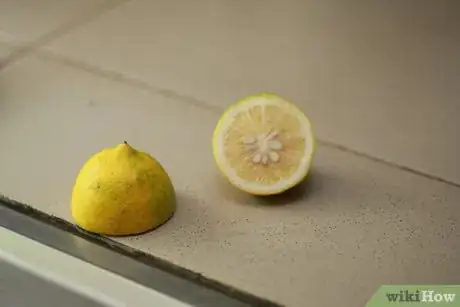



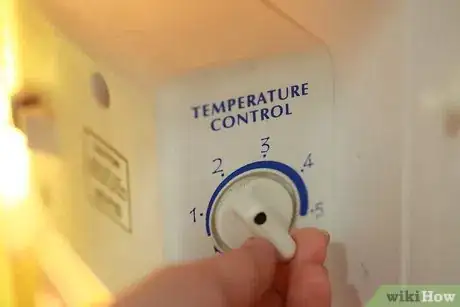

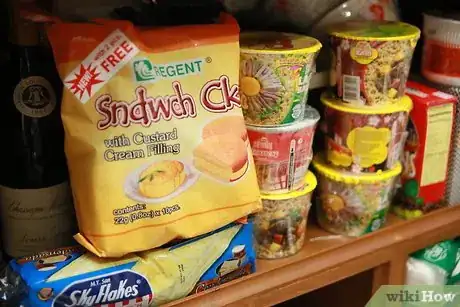
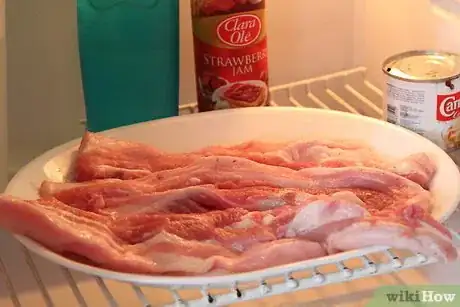
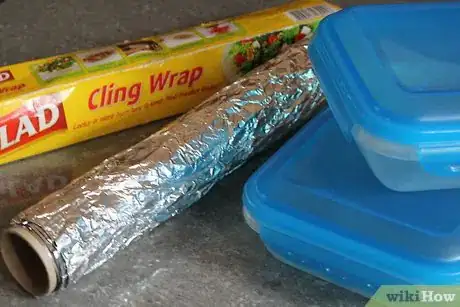
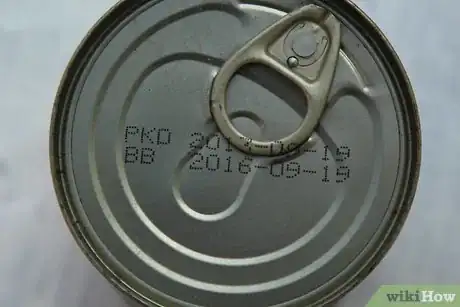
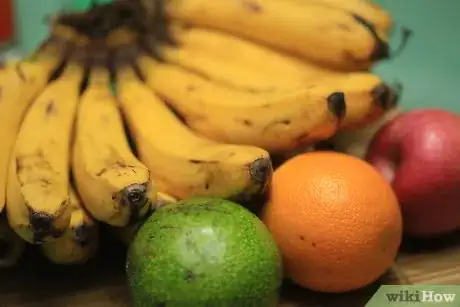



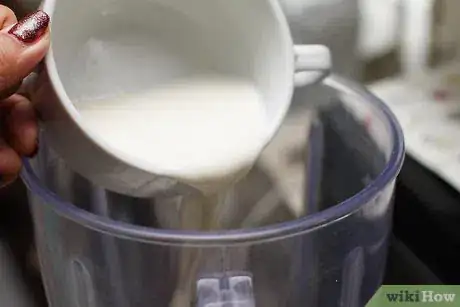

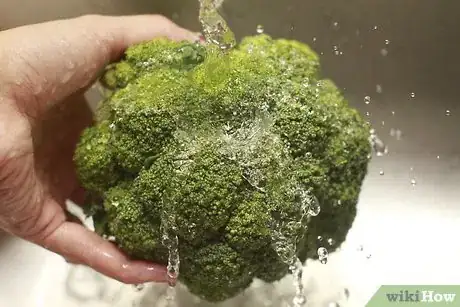
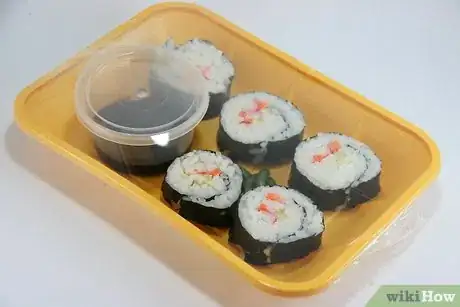


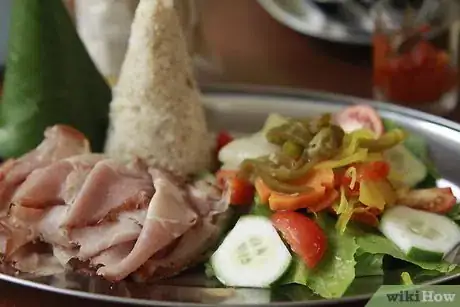




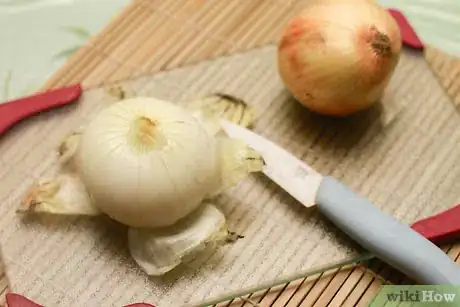
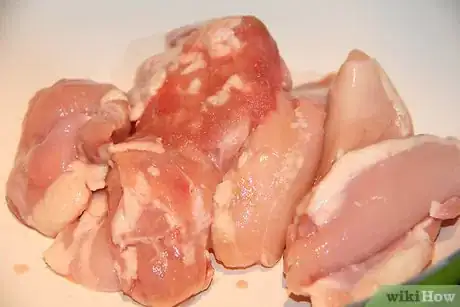

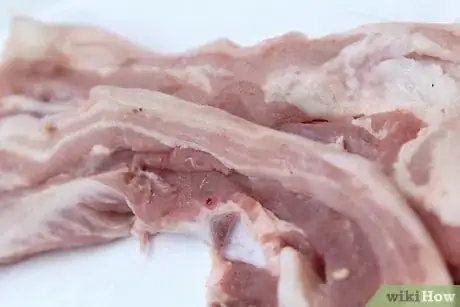
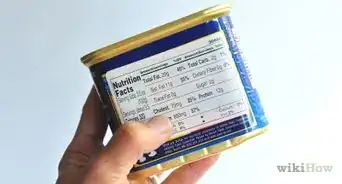



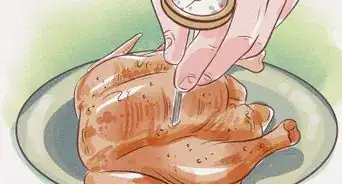
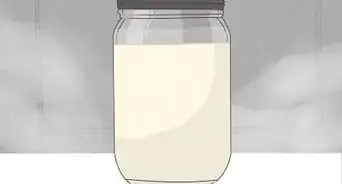
-Step-11.webp)

















































